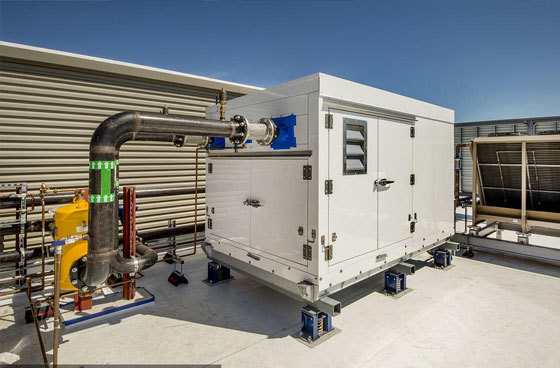Understanding Rooftop Packaged Air Conditioners: A Comprehensive Guide for Professionals

Rooftop Packaged Air Conditioners (RPACs) have become a popular choice for cooling commercial buildings and industrial facilities due to their efficiency and practicality. These units are designed to be installed on the roof, which not only saves valuable ground space but also provides an effective way to manage airflow throughout a building.
One of the primary benefits of RPACs is their all-in-one design. These units combine the components needed for air conditioning—such as the compressor, evaporator, and condenser—into a single unit. This compact arrangement simplifies installation and maintenance, as technicians can access all components from the rooftop. Additionally, the integration of these parts minimizes the need for extensive ductwork, which can lead to significant savings in installation costs and space utilization.
When it comes to energy efficiency, RPACs have advanced significantly over the years. Many modern models are equipped with variable speed fans and compressors, which adjust their output based on the cooling demand of the space. This capability not only enhances comfort but also reduces energy consumption, making RPACs an eco-friendly option. Furthermore, many rooftop units are designed to comply with energy efficiency standards, ensuring they operate at optimal levels while minimizing environmental impact.
Another important aspect of RPACs is their ability to provide both heating and cooling. Many units are equipped with heat pumps or auxiliary heating elements, allowing them to maintain comfortable indoor temperatures year-round. This versatility is particularly advantageous for businesses that need reliable heating solutions during colder months without the need for a separate heating system.
Moreover, RPACs are known for their durability and longevity. Designed to withstand harsh weather conditions, these units often come with robust features that protect against elements like rain, snow, and extreme temperatures. Regular maintenance, including filter changes and system checks, can significantly extend the lifecycle of an RPAC, ensuring it continues to operate efficiently for years.
In summary, Rooftop Packaged Air Conditioners offer numerous advantages for commercial and industrial applications. Their compact design, energy efficiency, dual heating and cooling capabilities, and durability make them an ideal choice for maintaining comfortable environments in various settings. As the demand for efficient climate control solutions continues to rise, understanding the features and benefits of RPACs is essential for professionals in the field. Embracing this technology can lead to improved operational efficiency and enhanced comfort for occupants, making it a worthwhile consideration for any facility manager or business owner.
One of the primary benefits of RPACs is their all-in-one design. These units combine the components needed for air conditioning—such as the compressor, evaporator, and condenser—into a single unit. This compact arrangement simplifies installation and maintenance, as technicians can access all components from the rooftop. Additionally, the integration of these parts minimizes the need for extensive ductwork, which can lead to significant savings in installation costs and space utilization.
When it comes to energy efficiency, RPACs have advanced significantly over the years. Many modern models are equipped with variable speed fans and compressors, which adjust their output based on the cooling demand of the space. This capability not only enhances comfort but also reduces energy consumption, making RPACs an eco-friendly option. Furthermore, many rooftop units are designed to comply with energy efficiency standards, ensuring they operate at optimal levels while minimizing environmental impact.
Another important aspect of RPACs is their ability to provide both heating and cooling. Many units are equipped with heat pumps or auxiliary heating elements, allowing them to maintain comfortable indoor temperatures year-round. This versatility is particularly advantageous for businesses that need reliable heating solutions during colder months without the need for a separate heating system.
Moreover, RPACs are known for their durability and longevity. Designed to withstand harsh weather conditions, these units often come with robust features that protect against elements like rain, snow, and extreme temperatures. Regular maintenance, including filter changes and system checks, can significantly extend the lifecycle of an RPAC, ensuring it continues to operate efficiently for years.
In summary, Rooftop Packaged Air Conditioners offer numerous advantages for commercial and industrial applications. Their compact design, energy efficiency, dual heating and cooling capabilities, and durability make them an ideal choice for maintaining comfortable environments in various settings. As the demand for efficient climate control solutions continues to rise, understanding the features and benefits of RPACs is essential for professionals in the field. Embracing this technology can lead to improved operational efficiency and enhanced comfort for occupants, making it a worthwhile consideration for any facility manager or business owner.

